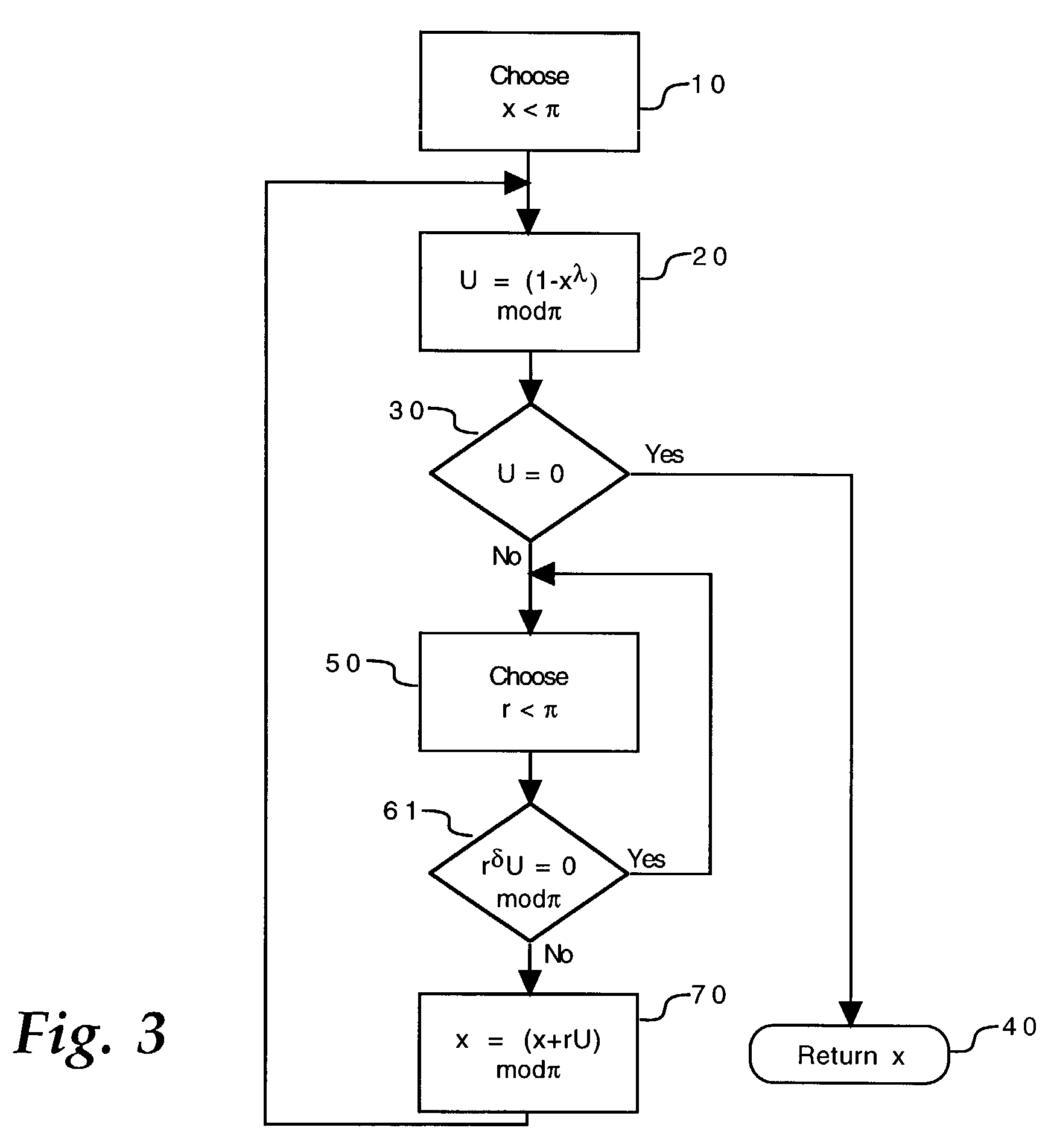Generation of a random number that is non-divisible by a set of prime numbers
a random number and prime number technology, applied in the field of electronic keys generation, can solve the problems of computational intensiveness, poor practicability, and excellent asymptotic complexity of techniques
- Summary
- Abstract
- Description
- Claims
- Application Information
AI Technical Summary
Problems solved by technology
Method used
Image
Examples
Embodiment Construction
[0022]To facilitate an understanding of the invention, it is described hereinafter with reference to its implementation in a smart card having a microprocessor. It will be appreciated, however, that the smart card is exemplary of a variety of different types of portable electronic devices for which the invention is particularly suited, and therefore this exemplary description should not be construed as limiting the invention in any manner.
[0023]In the implementation of public key cryptography protocols, such as the RSA algorithm, for example, it is necessary to select a pair of integer numbers p, q of given length that are co-prime with each other, for use in generating electronic keys for the protocol. To ensure that the selected numbers are co-prime with each other, a step of verifying co-primeness is performed. In the case of a portable electronic device with a microprocessor, such as a smart card, the test is performed within the card. Examples of tests for verifying the co-prim...
PUM
 Login to View More
Login to View More Abstract
Description
Claims
Application Information
 Login to View More
Login to View More - R&D
- Intellectual Property
- Life Sciences
- Materials
- Tech Scout
- Unparalleled Data Quality
- Higher Quality Content
- 60% Fewer Hallucinations
Browse by: Latest US Patents, China's latest patents, Technical Efficacy Thesaurus, Application Domain, Technology Topic, Popular Technical Reports.
© 2025 PatSnap. All rights reserved.Legal|Privacy policy|Modern Slavery Act Transparency Statement|Sitemap|About US| Contact US: help@patsnap.com



